Beth Kephart's Blog, page 196
March 8, 2012
The Heart Is Not a Size/retold and illustrated by a dear reader
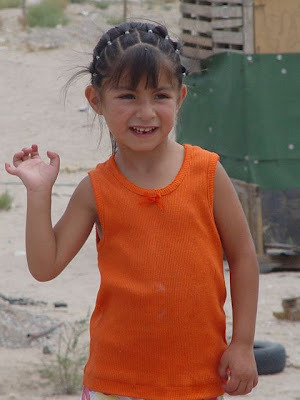
Yesterday at Villa Maria Academy I worked with 42 beautiful eighth graders—building writing exercises out of picture books, collectively pooling words for poems that would have made William Carlos Williams proud, studying some of the many ways that a story can begin.
Schools are supposed to teach many things. In this classroom love is clearly a curriculum component. There were future special education teachers in the mix, young women deeply concerned about world peace, students magnanimously enthused about a classmate's striking literary gifts, at least one dancer, and readers who did not need to be introduced to Ruta Sepetys or Kathryn Erskine. They had found these authors on their own.
At the end of the session one student shared with me her winter project—a report of sorts on THE HEART IS NOT A SIZE, my Juarez novel. She had told my story in her own words and created beautiful accompanying illustrations, and when she got to the page that introduced the little girl whom I had based on the child photographed here, I stopped. The likeness—the dark hair, the orange sleeveless shirt with the little bow—was so absolute that it seemed as if the Villa Maria student had traveled those dusty roads with us.
I rather wish she had. I would have enjoyed her company.




Published on March 08, 2012 04:27
March 7, 2012
Getaway Car: A Practical Memoir About Writing and Life/Ann Patchett: Thoughts on a Helpful Kindle Single

Sleep did not befriend me last night (come on, I thought, what did I do to you ?), but I made good use of time of the dark and restless time. First, I prepared a series of reading/writing exercises for my visit to Villa Maria Academy today in honor of World Read Aloud Day. We'll read Helme Heine's magical THE MARVELOUS JOURNEY THROUGH THE NIGHT as adults, for example, and then define our idea of paradise. We'll dwell with the simple words of William Carlos Williams. We'll write from different points of view and ask ourselves what makes for a first-chapter cliffhanger.
It will be fun, I think. I'm just hoping that I can locate my speaking voice between now and 9:15 AM.
When I was all finished that, I decided to download one of the Kindle Singles I had read about yesterday in Dwight Garner's New York Times story. My choice, but of course, was Ann Patchett's Getaway Car: A Practical Memoir About Writing and Life, though in about five minutes I'll also be downloading Jane Hirshfield's Heart of Haiku.
In any case, there I was, four A.M., as wide-eyed as my puffy eyes would allow, reading Patchett's primer on writing. My verdict: Spend the $2.99. Please. It's memoir, it's advice, it's fantastic stuff on Grace Paley and Elizabeth McCracken. Patchett is realistic. She's not ashamed of the facts. Writing is hard work, she reminds us. And it doesn't get done until you show up to do it.
A sliver:
If you want to write, practice writing. Practice it for hours a day, not to come up with a story you can publish but because there is something that you alone can say. Write the story, learn from it, pull away, write another story. Think of a sink pipe filled with sticky sentiment: The only way to get clean water is to force a small ocean through the tap. Most of us are full up with bad stories, boring stories, self-indulgent stories, searing works of unendurable melodrama. We must get all of them out of our system in order to find the good stories that may or may not exist in the fresh water underneath.
Boy, I needed that.
And on another, final note: That is not my dining-room table (though it is a restaurant where I tend to take my clients). But if I did own that table and if I did have that much light, I'd work right there, writing the bad stories down so that I could finally (it's taking long enough) get to the good ones (they must be somewhere).




Published on March 07, 2012 04:29
March 6, 2012
What I'll be reading for World Read Aloud Day
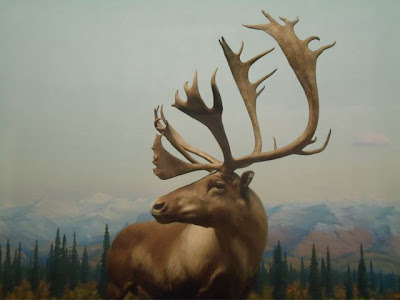
This week my Penn students are off for spring break, but I'll be back in (another) classroom tomorrow—this time among the eighth graders of Villa Maria Academy, where I've been asked to share some thoughts and favorite books for World Read Aloud Day.
In preparation I've been sitting on the floor surrounded by books (isn't that where everything begins?). I've been making decisions about what to carry forward.
My choices are these:
Owls and Other Fantasies: Mary Oliver
Carver: Marilyn Nelson
A Tree Grows in Brooklyn: Betty Smith
A River of Words: Jen Bryant/Melissa Sweet
The Marvelous Journey Through the Night: Helme Heine
The Book Thief: Markus Zusak
One Crazy Summer: Rita Williams-Garcia
Mockingbird: Kathryn Erskine
Between Shades of Gray: Ruta Sepetys
Goodbye, Mr. Chips: James Hilton
What will you read, for World Read Aloud Day?




Published on March 06, 2012 15:09
House of Stone/Anthony Shadid: Reflections

Yesterday afternoon and early this morning I sat, reverent, as I read Anthony Shadid's final book, House of Stone: A Memoir of Home, Family, and a Lost Middle East.
It isn't right: his final book. We need Shadid, the Pulitzer Prize winning Middle East correspondent for the New York Times who passed away just a few weeks ago on his way home from war. (He was walking a mountain pass, there were horses near, he died, an allergic reaction). We need how he sees, how he teaches, how he loves, and how he writes. He is not replaceable.
House of Stone is breathtaking—gigantic in ambition, equal to that ambition, combustible and yet right in its mix of country history, imagined (or imaginatively supplemented) familial history, personal yearning, poetry, politics, passion flowers. It recounts the months Shadid spent rebuilding his great-grandfather's estate in old Marjayoun, a dusty place where gardens grow in the country known as Lebanon. It gives us Shadid, newly divorced and with a daughter far away, seeking to resurrect the idea of home. It introduces the sarcasm and suspicions and ironies and odd camaraderie of a band of neighbors and fickle house builders. It memorializes a dying doctor who knows everything, it seems, about making gardens grow.
House of Stone is a book built of many parts, and yet it works seamlessly, sweeping foreigners like myself toward its quiet, exotic heart. There is war, and there is the pickling of olives. There is dust, yet flowers grow. There are age-old accusations and cautions about war. There is a father working so far from the daughter he loves but choosing to believe in days yet to come. There is Shadid's own sadness over those who have died too soon—by horse, by weakened lungs. Yes, horse. Yes, weakened lungs. It is nearly unbearable to read these passages, but they are so beautiful and holy that we do.
One passage, here. All of it this good:
The tiles returned one to a realm where imagination, artistry, and craftsmanship were not only appreciated but given free rein, where what was unique and striking, or small and perfect, or wrought with care was desired, where gazed-upon objects were the products of peaceful hearts, hands long practiced and trained. War ends the values and traditions that produce such treasures. Nothing is maintained. Cultures that may seem as durable as stone can break like glass, leaving all the things that held them together unattended. I believe that the craftsman, the artist, the cook, and the silversmith are peacemakers. They instill grace; they lull the world to calm.
Beneath the branches of your olive trees, rest in peace, Anthony Shadid.




Published on March 06, 2012 07:58
March 5, 2012
and now a few words about sleep
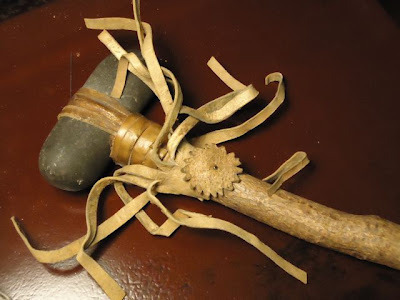
Among the many things I wish I had more natural talent for is sleep. I have lived long intervals (months, even) living on an hour or two a night. I have operated in the danger zone—exhausted at work, too tired to drive, not precisely paying attention when walking through a door.
You can only go on so long like that. At one point, sleep deprivation defeats you.
A few months ago I voted against defeat. I would teach myself to sleep, I vowed, if it was the last thing I did. I didn't want it to be the last thing I did.
Sleeping more (or trying to sleep more) would mean a lot of things. Whereas I had, for decades, squeezed two days worth of work into most every day, I'd have to learn to hold myself back. To make fewer promises. To say yes to fewer things. To work at a slower clip. Fewer corporate projects, then, fewer book reviews, fewer guest appearances, fewer yeses, fewer emails, a diminished presence in the Land of Blog, three days a week at the gym instead of four, and never the 5:30 AM Zumba call, and maybe I'd dust less often and also, I'd do more cooking with a Crock Pot—making two meals at a time instead of one.
Simple stuff.
Harder stuff: Staying in bed when I wasn't sleeping. Keeping my heart beat down. Talking myself out of giving up. You can't invoice for sleep and it doesn't put you on the bestseller list and when you have to increasingly say no to "pick your brain" invitations, it doesn't earn you any new friends.
Perseverance, I knew, would be everything, and for the past six months, I persevered. No matter what else was happening I fought toward my own personal goal—at least five hours of sleep each night.
In time (but yes, I struggled) things changed. I wasn't nearly as on edge. I was far more patient. For better or worse I grew more honest in my exchanges, more clear in my priorities, more focused during the hours that I was working, more open to new ideas in both my books and my teaching, less inclined to fall asleep (for a dead-to-the-world fifteen minutes) watching the 9 PM show. I didn't feel as brittle inside. I had more hope, more capacity within. I danced better, walked farther, thought more clearly, did not cede to the unconsidered impulse.
Last night, I had my father for dinner—a Crock Pot meal. When he was leaving I told him that I'd been working on sleep. "I can tell," he said. "I can tell just by looking."
A victory, then. Far from defeat.




Published on March 05, 2012 06:32
March 4, 2012
Small Damages: the first interview (conducted by the remarkable Kathryn Erskine)
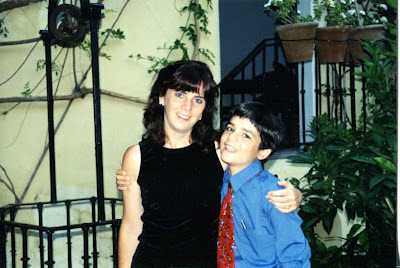
I talk a lot about how much I love Philomel, Tamra Tuller, Michael Green, Jill Santopolo, and Jessica Shoffel, not to mention the amazing sales and marketing team—but hey, it's not without good reason. Among the many gifts of working with this house is the sense that I have joined an active, loving, functional family. These are people who care. These are people who read your books when they arrive and who send you notes throughout the process—notes that you cling to in the midst of hair-tossing winds.
Among the many gifts that Tamra has given is introductions to two of her own writers—both of whom were heroines of mine long before I ever thought I'd meet them. One is Ruta Sepetys, whose Between Shades of Gray is a towering international success; Ruta and Tamra were just in Lithuania, for example, meeting with the prime minister about that very book. The other is Kathryn Erskine, who isn't just the National Book Award winner for Mockingbird, but a woman of such abiding curiosity and abundant imagination that when you ask, What are you working on these days, Kathy?, you get a series of gorgeous history lessons and a few foreign phrases thrown in to boot.
Both Ruta and Kathryn kindly read Small Damages and contributed their words to the back cover. A few months later, Ruta wrote to say it would be fun to find a way to do an event together (imagine!) and Kathryn asked if I'd be interested in doing an interview for Book Hook, an email newsletter written for parents, homeschoolers, teachers, librarians, and grandparents. The answer to Kathy's question was pretty easy (yes), and today I share the link to our conversation. This was the first interview I'd done for Small Damages, and it was an honor to have had the conversation with Kathy.
I share a snippet below. You can find the whole by going to this link and then downloading the February/March 2012 edition. Between now and then, I share the photo up above from one of my many trips to Seville. That gorgeous kid is the boy I love. In a few months' time, he'll be a college grad. I dedicated Small Damages to him, because it was this young man who, at so many junctures in his life, would sit and let me read aloud from a book that challenged me greatly; he was the one who listened. Write about the living, not the dead, he said one day after I had read a funeral scene. With his words, my story turned. So did my future.
Kathy: You really captured the mood of sultry, sun-drenched Spain. Can you tell us about your Spanish travels?
My husband, who was born and raised in El Salvador, has a far-flung family. His youngest brother lived in the south of Spain for years, and so we visited a number of times. Seville became a city that I could walk alone, discover on my own, a city I loved and love still. We would also drive out to the countryside. During one excursion, I met one of the best known breeders of the fighting bulls of Spain. I set SMALL DAMAGES in a cortijo very much like the one we visited. Miguel is in some ways patterned after that heroic breeder.




Published on March 04, 2012 09:10
March 3, 2012
you should see my desk (no, don't): putting the final touches on a proposal
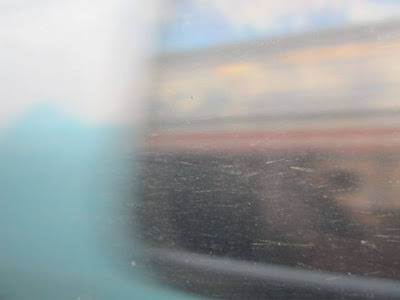
In 2009, I started work on a book of nonfiction. I wrote it all one way, but it was the wrong way, so I put it aside. Put every last tidbit of the thing aside. In big plastic bins, in multiple desktop files, in corners of my mind, it was gone—whoosh. Gone. I waited a year. (Scars have to heal.) And then I began again.
I now have a 50-page proposal on my desktop, along with dozens of books, hundreds of clothespinned pages, many flowery file folders, and a glass of two-day-old water. It looks like the wind blew through. It looks like something's cooking. It looks like it's time to call this day an actual day.
Tomorrow I will wade in here and see what damage I have done.




Published on March 03, 2012 15:35
Philadelphia: where graffiti got its start

Riding back from the Big Apple on an Amtrak Keystoner, I watched the sky go from gray to blue as we neared Philadelphia. It was that time in the afternoon when that glitter thing can happen, and Philly's graffiti was lit up, as if for a show. Modern graffiti (for of course there were cave painters eons ago) started here, the legends go, in the early 1960s. Cornbread and Cool Earl left their tracks everywhere. Embellishment ensued.




Published on March 03, 2012 08:55
March 2, 2012
Then Again/Diane Keaton: Reflections

One not insignificant measure of the goodness of a book is how long we read without looking up. I read Diane Keaton's Then Again from the time I left 30th Street Station until the time I reached Penn Station in New York yesterday. Then eagerly settled back in on the way home.
Celebrities tend to write autobiographies. Diane Keaton didn't. She wants to understand who her mother is, how her mother shaped her, and what kind of mother she herself is now, and to do this, Keaton artfully poses the right questions and, taking risks, leaves aside that which does not matter. She is quiet, unassuming, funny, graceful, and one believes she is telling the truth. She did not write to entertain us, per se. She takes no easy pot shots. She gives us the men she loved for the reasons she loved them. She gives her yearning, sometimes depressed, slowly fading mother the room for her own story. Keaton writes because she is one of us. She writes to find her way. This is not a book of quips or anecdotes or gossip. It's life, and it's beautifully rendered.
From the early pages:
The state of being a woman in between two loves—one as a daughter, the other as a mother—has changed me. It's been a challenge to witness the betrayal of such a cruel disease while learning to give love with the promise of stability. If my mother was the most important person to me, if I am who and how I am largely due to who and how she was, when then does that say about my impact on Duke and Dexter? Abstract reasoning is no help.




Published on March 02, 2012 10:37
March 1, 2012
Jan and Lana Dance Jive at 30th Street Station
I've written about Jan and Lana so often on this blog that I don't need to introduce them (do I?). They are the dancing stars, the soon-to-be movie stars, the team that keeps me honest in a Norah Jones waltz, the instruction that burns but lasts.
Here they are, dancing at Philadelphia's Thirtieth Street Station.
Because that's how good they are.




Published on March 01, 2012 15:00



